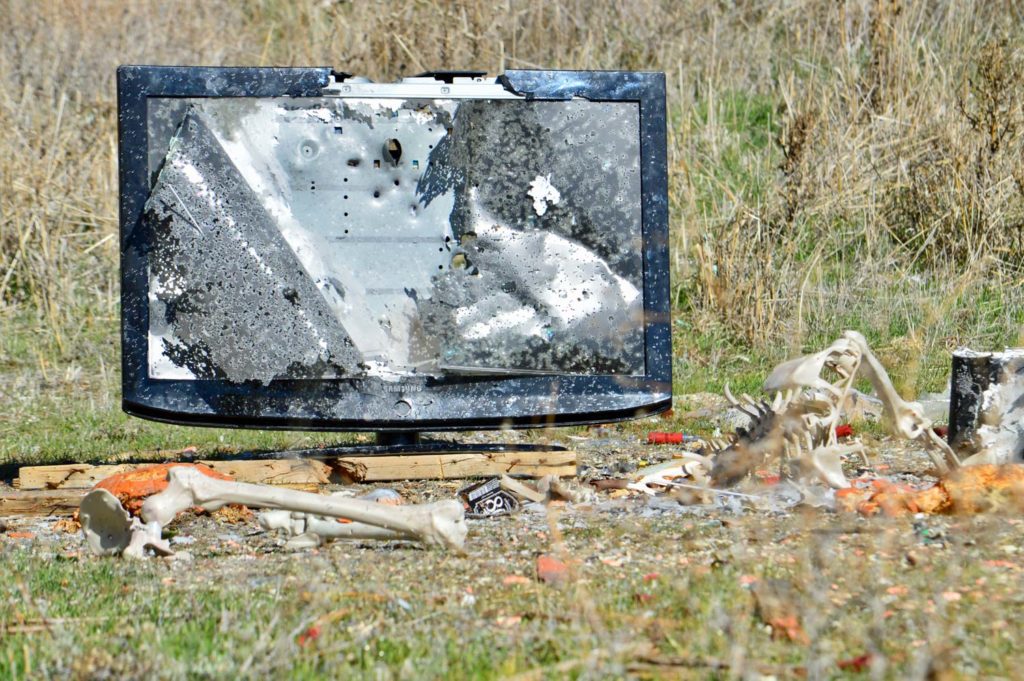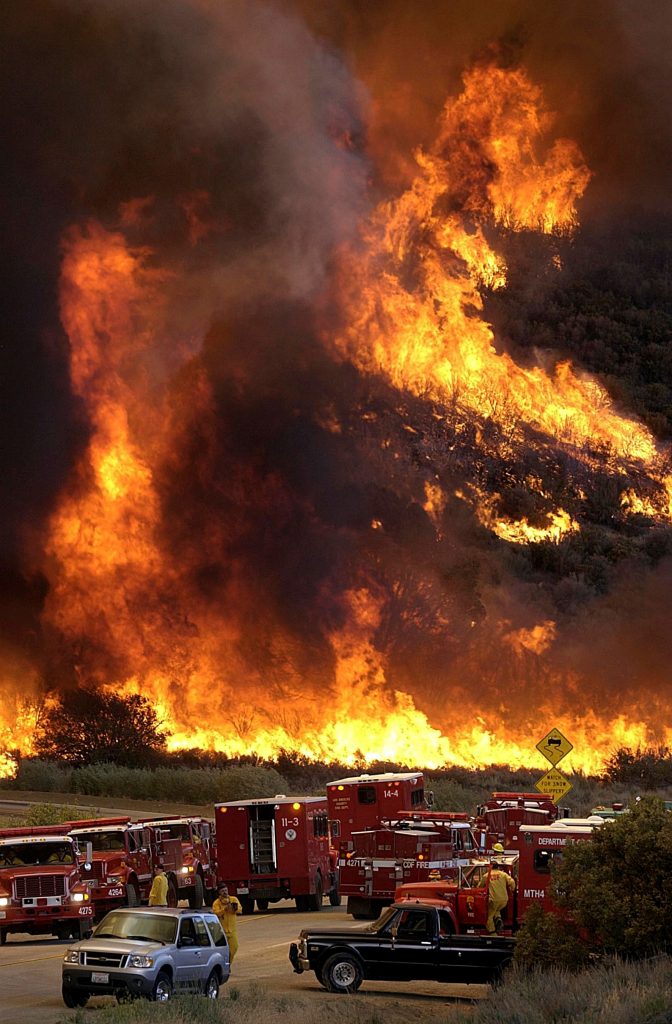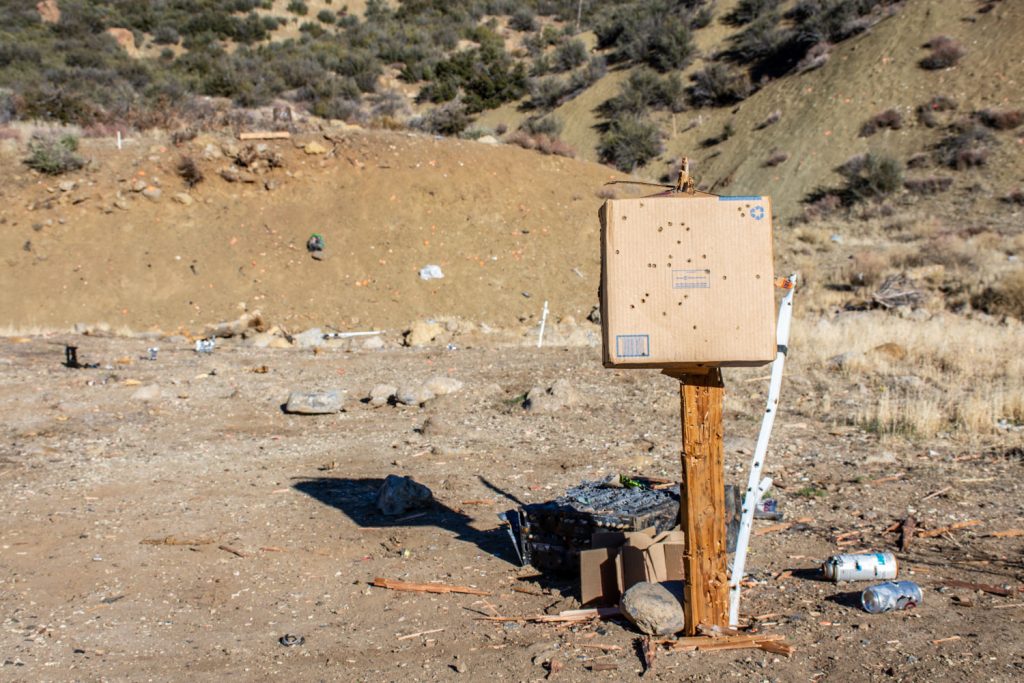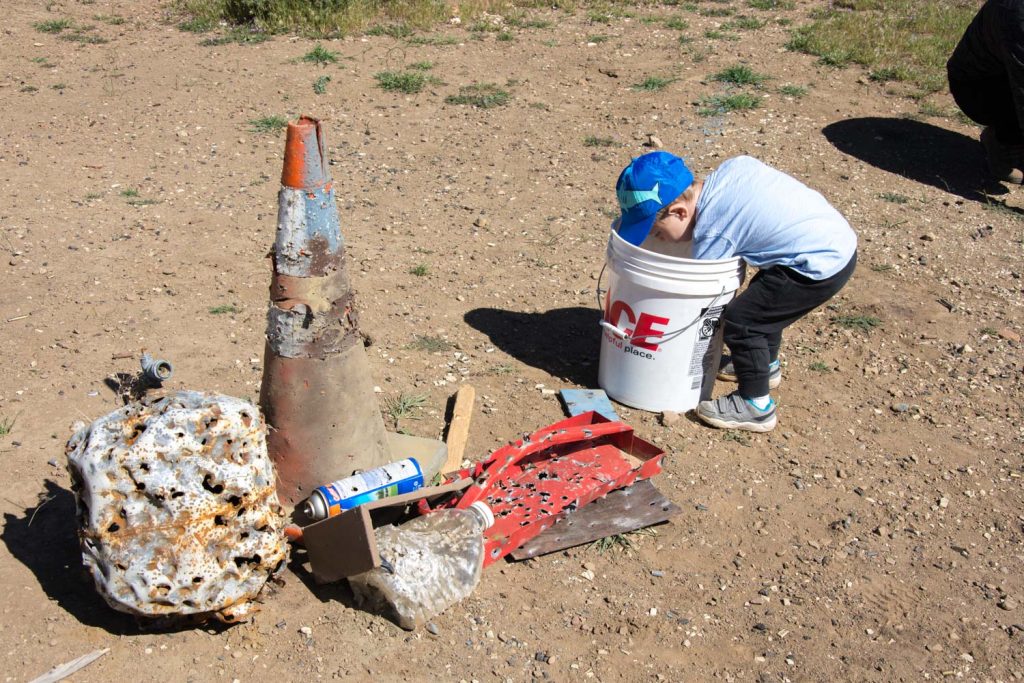
Goleta, Calif.—The U.S. Forest Service has announced that it will extend for another six months a ban on unmanaged target shooting throughout the Los Padres National Forest. The ban—first announced in January 2019—allows forest officials and volunteers to address the proliferation of litter, soil and water contamination, wildfires, vandalism, impacts to endangered wildlife, and other environmental and public safety hazards caused by decades of unmanaged target shooting across nearly two million acres of public lands in Santa Barbara, Ventura, San Luis Obispo, Monterey, and western Kern counties.
The ban only applies to unmanaged target shooting. Legal hunting with a valid license is not affected, and target shooting can continue at the Ojai Valley Gun Club and the Winchester Canyon Gun Club, both of which are staffed and operated by nonprofit organizations permitted by the U.S. Forest Service.

The Forest Service’s announcement cites “increasingly high fire danger conditions in the extended weather forecast and the potential for a wildfire sparked by shooting” as the primary justification for extending the ban. The Forest Service recently identified more than 140 informal target shooting sites throughout the Los Padres National Forest, and investigators have blamed shooting for causing at least 53 wildfires in the forest, scorching a combined 74,478 acres of forestland.
The announcement also comes as the Forest Service and the U.S. Fish & Wildlife Service are completing a study on the impacts of unmanaged target shooting on rare and endangered plants and animals. The agencies agreed to conduct the study to partially resolve a lawsuit filed by Los Padres ForestWatch in 2018. Los Padres ForestWatch is represented in the lawsuit by Earthrise Law Center and the Environmental Defense Center. That study, resulting in the release of a biological opinion, is expected to be complete by March of this year.
Three other national forests in southern California have similar, permanent, bans in place. The Angeles, San Bernardino, and Cleveland National Forests have prohibited target shooting outside of formally-designated shooting sites for decades.
“Today’s announcement will continue to provide our public lands with a much-needed respite from the ongoing threat of wildfire posed by unregulated target shooting,” said ForestWatch executive director Jeff Kuyper. “We thank the Forest Service for taking this important step to protect our communities, our homes, and our public lands from the risks posed by unregulated target shooting.”
“Every day that unmanaged target shooting is prevented in the Los Padres National Forest is a good day for the environment,” said EDC attorney Maggie Hall. “We applaud this Forest Service action, but there is much more that needs to be done, and we will continue to work to ensure that our wild lands, clean water, and wildlife are protected from this destructive practice.”
In addition to the two permitted shooting sites in the Los Padres National Forest that remain open, shooters can practice their marksmanship at more than two dozen indoor and outdoor ranges located less than an hour’s drive away. An interactive map of these ranges can be viewed at LPFW.org/where-to-shoot or wheretoshoot.org courtesy of the National Shooting Sports Foundation.
According to the Forest Service website, “Law Enforcement Officers will be strictly enforcing this Forest Order in all areas of the Forest.” Individuals cited for violating the ban will face a mandatory appearance in U.S. District Court, where the judge can levy fines of up to $5,000 and/or six months in jail.
Background
A ban on “dispersed” target shooting in the Los Padres National Forest was first announced in 2005, when the Forest Service updated its management plan for the area. In approving the new plan, Regional Forester Bernie Weingardt stated:
The Los Padres National Forest has been historically open to recreational target shooting except where prohibited by closure order; however, with increasing numbers of national forest users, concerns for public health and safety, resource damage to areas where the activity has been concentrated, and the documentation of numerous wildland fires that have been caused by recreational target shooting, the Los Padres National Forest intends to develop a Forest closure order based on Standard S36 in Part 3 of the forest plan. This means the Los Padres National Forest will generally be closed to recreational target shooting except where it is allowed in designated open areas and ranges. The ranges are specific sites that are managed under special-use authorizations. This is not new in southern California. The other three southern California national forests (the Angeles, the Cleveland, and the San Bernardino National Forests) have restricted recreational target shooting to designated areas. Because of its rural character, the Los Padres National Forest has not seen the need to implement this strategy until now. As the population continues to grow and recreation demand increases, I must manage shooting in a way that provides for public health and safety and protects the forest environment. Shooting associated with hunting is not affected and will continue as in the past.

But in the years following, the ban was not implemented. A 2016 report by Los Padres ForestWatch – a local nonprofit organization that protects the Los Padres National Forest—found nearly one hundred informal shooting sites throughout the forest. The report—Forest in the Crosshairs: The Environmental and Health Impacts of Target Shooting in the Los Padres National Forest—revealed large amounts of trash at these sites, along with dozens of trees left dead or dying from repeated shooting. Televisions, computer monitors, refrigerators, microwaves, and other household appliances were frequently used as targets, contaminating nearby soils and waterways with toxic heavy metals. Shooting-related vandalism was also recorded at public restrooms and trailhead signs, costing tens of thousands of taxpayer dollars to repair.
Cleanup Effort Underway
Since 2007, 680 ForestWatch volunteers have spent 3,769 collective hours picking up 17,430 pounds of trash from 39 shooting sites throughout the forest. Everything from household appliances to shotgun shells, bullet casings, and broken glass were found and removed from these sites, but volunteers could not keep up with the rate at which new trash would accumulate. Sites were often trashed days after volunteers cleaned them up.

Following the initial ban last year, ForestWatch—in conjunction with the U.S. Forest Service and other community organizations—began a massive effort to clean up the trash left behind at these informal shooting sites. People interested in helping with the cleanup effort can email volunteer@LPFW.org to receive notification of future cleanup events.
“We want to clean up as many of these sites as possible,” said ForestWatch Conservation Director Bryant Baker. “Our volunteers are eager to make a difference, and with the shooting ban in place, they can clean up these areas safely and with assurance that they will stay clean.”







Comments are closed.